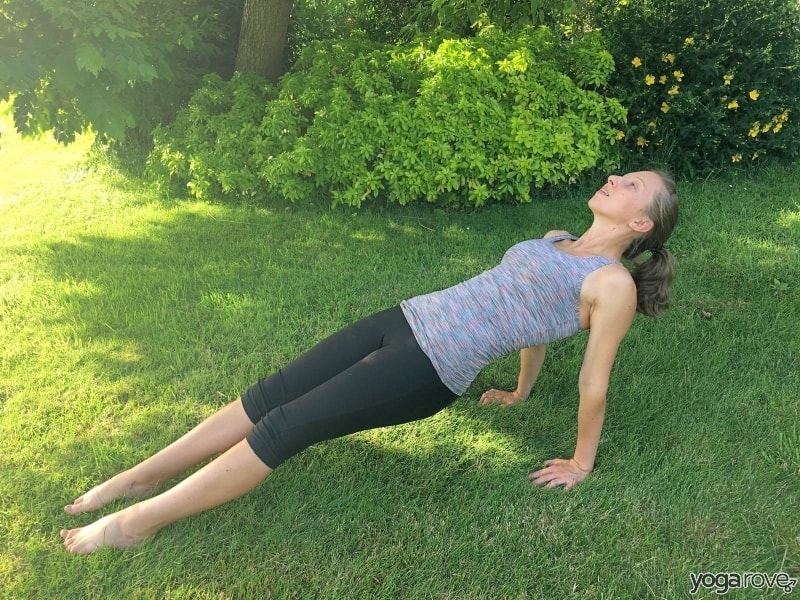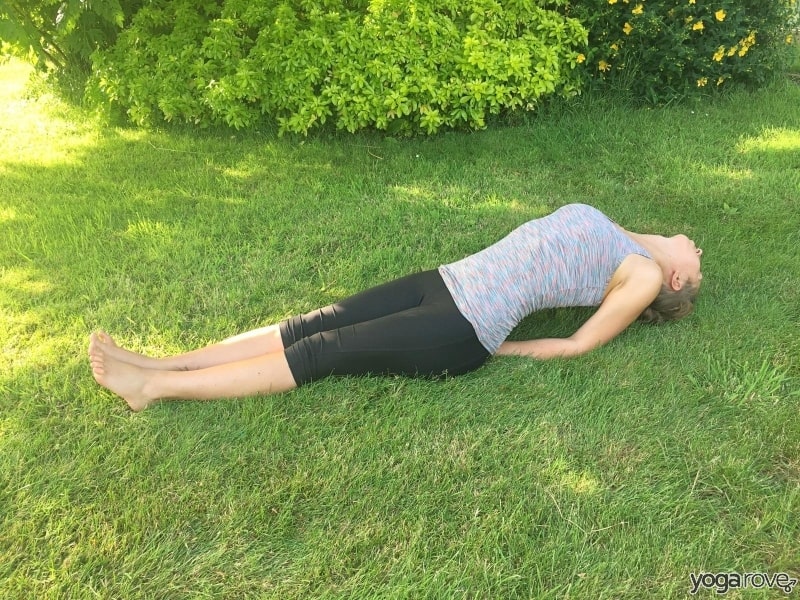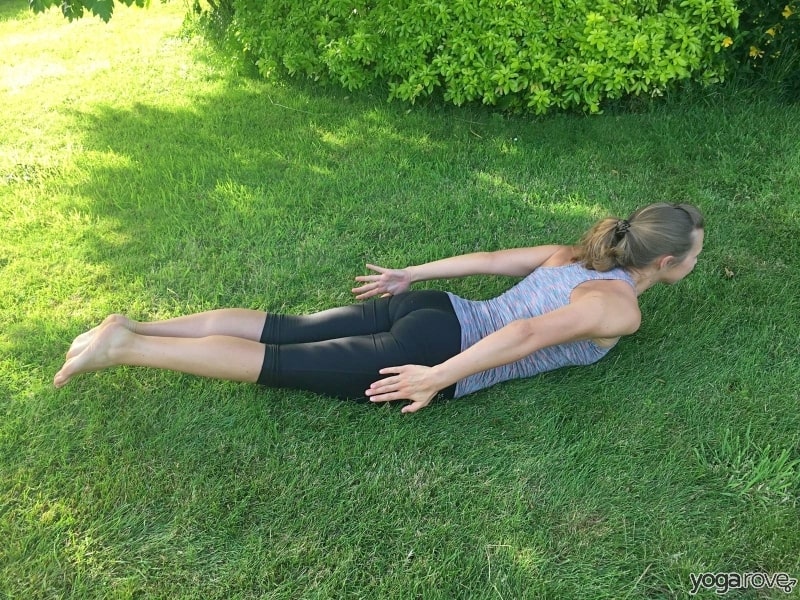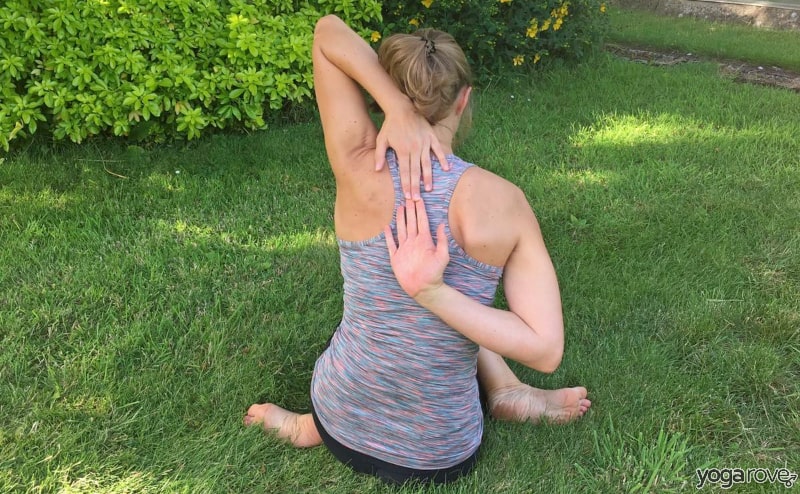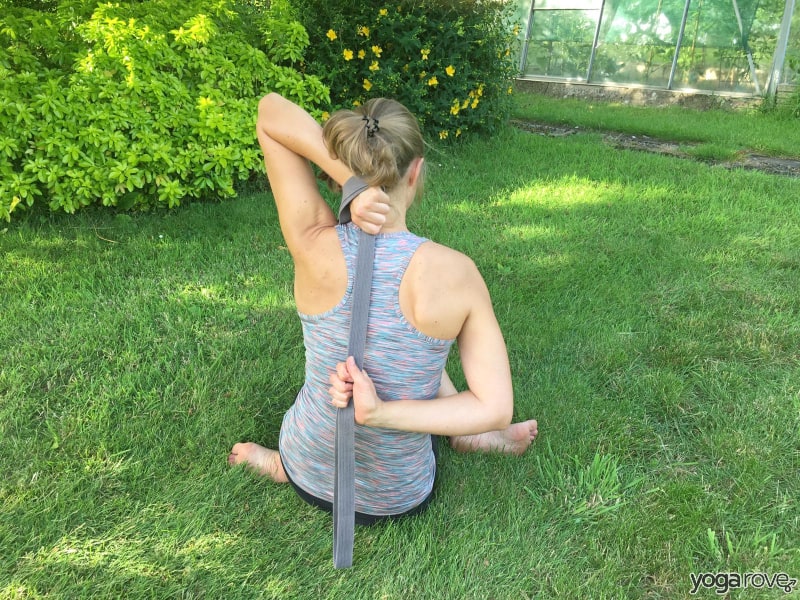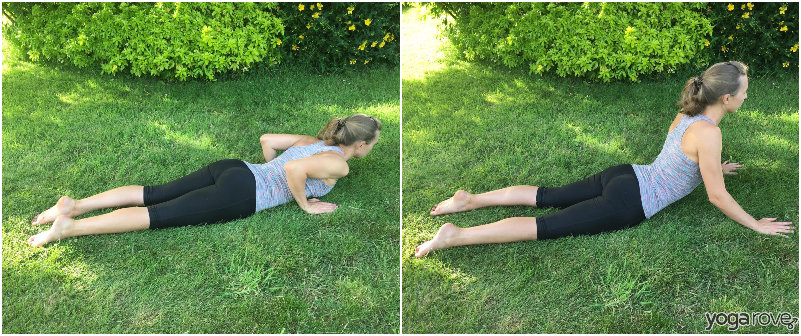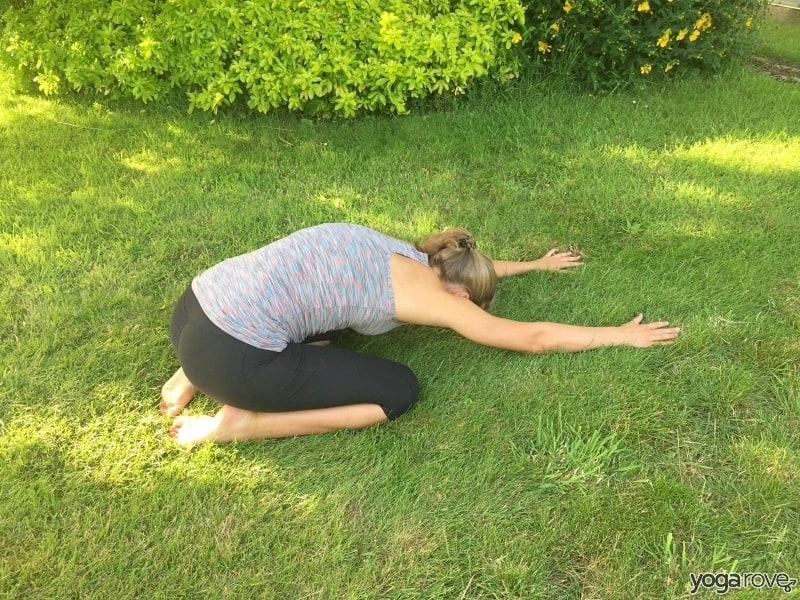The worst pain is felt between the shoulder blades. You feel as though it is always with you and is impossible to get rid of. When it first started happening to me, I kept stretching it as much as I could, but the pain would only temporarily disappear before returning. I was able to determine what I was doing incorrectly, what caused it, and how to stretch between the shoulder blades properly after conducting a significant amount of research.
What Causes Pain Between Shoulder Blades?
The main cause of the pain comes from bad posture while we stand, sit at our desk, or type on our phones. Rounding your shoulders forward and hunching over causes the muscles in the shoulders to overstretch and eventually lead to pain.
That means that by me stretching my shoulder blades I made it worse. If you are stretching your shoulders to obtain temporary relief you need to stop.
This overstretching is not the only cause of shoulder pain. An injury to the muscle or tendon can be caused by:
- heavy lifting
- long periods of working at a desk
- poor exercise posture
The main focus we are going to have in this article is to teach you the many ways to reverse your bad posture to help get rid of back pain between your shoulder blades.
Places To Focus On Your Posture
You don’t realize it but posture and balance are used in every aspect of our life. To correct this we need to be self-aware in everything we do and focus on correcting the imbalances that we create.
By having good posture throughout your day you will decrease the chances of your body becoming imbalanced. Preventing your body from becoming imbalanced will greatly reduce your chances of causing your body pain.
This is one of the first things you need to start working on right away. Even right now in this moment while you are reading this.
Here is a list of situations you should check your posture in:
- Sitting at your desk
- While you eat
- When you stand
- Driving in your car
- When you pick up a heavy object
- Reading a blog post
This self-check list is what allowed me to realize the areas in my life I was having bad posture that caused my back to hurt.
I work at a restaurant and I talk to people all day. Whenever I would get into a conversation that lasted over 30 seconds I would shift my weight over to one side. The shift in weight and holding my body in these positions for long periods of time caused my body to have pain.
After realizing this I always made sure I distributed my weight evenly and after a short period of time, my body started feeling a lot better again. I am not sure how I developed this habit but I am very glad that I become self-aware to prevent what I was doing to get any worse.
What Does Good Posture Look and Feel like?
One tip that I always try to implement when I stand up is to act as if a string is holding the top of my head up. Doing so causes my chest to open up and prevents me from slouching.
When I focus on getting into good posture it gives me the feeling of being proud. I know it sounds silly but the body language you put yourself in has the power to change your emotional state. To test it out, try hunching over for a minute and notice how you feel. The opposite of this would be to stand up tall and hold your hands in a “V” pose, notice how much better you feel.
The foundation of your posture:
- starts with your feet
- knees slightly bent
- neutral hips
- the spine needs to be in an “S” curve
- bring shoulders back
- longneck with the chin slightly up
- crown of the head feels like it is being held up by a string
For more information on this subject check out the video below. If you click on the person’s YouTube channel you will also discover her posture series on how to improve it from your feet to your head.
How To Fix Shoulder Pain and Bad Posture?
When I first had this pain between the shoulder blades my natural instinct was to stretch and massage the area. As we learned before stretching the shoulder muscle is the main reason for the pain to occur. Massaging is bad because it will cause the muscle to relax and elongate.
To fix this issue we are going to focus on opening up the chest and the muscles in the front shoulder. We will do this by learning about the different yoga poses to reverse bad posture and different posture correction exercises.
Focusing on these movements for three times a week for the next two weeks is going to result in a big improvement in reducing your shoulder pain.
Improving your overall posture is going to take even more time. Working slowly with these poses and movements are the key. Even though your pain from your shoulders may disappear you should continue to strengthen your entire body to reduce any future injury from occurring.
How to Stretch Between Shoulder Blades
Strengthening your muscles is going to help you reverse your poor posture and help relieve pain between the shoulder blades. Each and every one of these poses is going to help you accomplish this goal.
If at any point you find any of these poses difficult, move on to the next pose. Focus on listening to your body and what it tells you to do.
Before starting any of these poses you should warm up your
body. You can either go outside for a 10-minute walk, walk in place
inside.
1. Upward Plank Pose
This is a great pose to open up your chest and stretch the front of your shoulders. Practicing this pose is also going to help you strengthen your core and challenge your ability to stay balanced.
Instructions:
- Sit down with your legs stretched out in front of you
- Bring your hands behind you pointing your fingers toward your feet
- Keep your feet stretched out with your big toes touching
- From your hips rotate your legs inward
- Draw your belly in and your tailbone reaching towards your feet. You might have to bend your arms and bring your lower back down a little to make this happen
- Inhale and press into your hands, feet touch the ground and the hips are lifted
- Focus on keeping your pelvis tucked in and your core engaged. Lift your chest upward and draw your shoulders down
- Lift your head back and breath. If lifting your head backward is not comfortable you can maintain your gaze forward in a comfortable position. We don’t want you to strain your neck in any way.
- When you are ready to get out of the pose slowly bring your hips to the floor on the out breath.
2. Fish Pose
Even though this pose focuses on stretching out your entire front upper body it is also improving the strength of the neck and the upper back. Strengthening these muscles will help you reduce your pain in between your shoulders.
Instructions:
- Lie down on your back with your spine straight with your arms and legs extended
- Slightly lift your pelvis off the ground to allow yourself to place both palms under your butt, then lower your pelvis back down on top of your palms
- Inhale and raise your chest upward while you bend your elbows and lift your head off the ground
- Slightly lower your head to touch the ground and make sure most of the weight is on your elbows. If you are experiencing any neck pain stop right away.
3. Locust Pose
This is the pose that is going to help you out the most because it is going to strengthen your muscles on your upper back to help realign your shoulders. Out of all the yoga poses this is the one you should practice the most that is really going to reduce your pain in between your shoulder blades.
Instructions:
- Lie flat on your stomach with your arms by your side and your forehead touching the ground. If your forehead touching the ground bothers you try turning your head to one side and chest on your cheek
- Exhale and lift your head, chest, arms, and legs off the ground.
- Keep your legs straight and your arms paralelle
- If it is hard for you to lift your legs off the ground try focusing on lifting just your head, chest and arms. These are the main muscles we want to work on
- Make sure your neck is not straining, if it is try lowering your gaze to the ground
- Hold this pose for 3-5 seconds. Inhale and lower your body back down. Complete this motion a couple times for better results. The goal is to strengthen your upper back muscles which will help correct your poor posture
4. Cow Face Pose
For this pose, our main concern is the positioning of the arms. If you are capable of getting into the full pose there is no harm in opening up your hips. After the first video, I also found a second video that will show you how to use a yoga strap to get into the position. Each of our bodies are designed differently and there is no way for me at the moment to get my hands to touch each other behind my back. This is why props are used to modify the pose.
Instructions:
- Sit on your mat with your legs stretched out in front of you
- Bend your knees by bringing them closer to your chest.
- Slide your right leg back to your left hip and your left foot to your right hip.
- Make sure both knees are stacked on top of one another. If you are like me this positioning of your legs feels impossible. Variation: Put your feet under your but and sit on your feet
- Bring your left arm in the air and bend at the elbow reaching your hand behind your back.
- Bend your right arm at the elbow and reach up towards your left hand.
- Interlock your fingers. If you cant grab your fingers make sure you use a yoga strap to adjust the pose. See the video below marked cow face arm pose with strap for more details.
- Hold over your hips and relax your breathing. This part of the pose isn’t required to help your shoulder pain but by helping your hip mobility you are improving your overall posture.
- To keep things even if you are also stretching your hips make sure you switch legs and switch arm positions.
Cow Face Arm Pose With Strap (arm modification)
For those of you that aren’t capable of touching the hands together remember to use a strap. Here is a video to show you a more detailed example on how to use the strap for cow face.
5. Cobra Pose
Cobra pose is one of the best poses to help stretch your chest, shoulders, and abdominals all at the same time. While getting in this pose it is also important that you stay mindful when lifting up your upper torso with your back. Focus on using your back to lift your upper body will help you strengthen your upper back and shoulders.
Instructions:
- Bring your belly towards the floor with your hands aligned with your chest. Keep your fingers spread and your chin on the floor.
- Keep the shoulder blades together and press the tops of the feet into the ground and lift your upper body.
- Make sure you are using your back body to lift. To test this lift up your hands and try to maintain the position.
- Feel the pose open up your chest and your shoulders.
6. Extended Child Pose
This is the best pose to finish a yoga sequence and relax your body while stretching your body in proper alignment. Remember to always focus on relaxing your body by mindfully focusing on your breath and how your body feels. Use this pose to help you recover and relax your shoulders.
Instructions:
- Start on all fours in table top pose
- Bring your big toes together and sit back on your feet.
- Take a deep breath and lengthen your spine.
- On the exhale walk your hands away from you to stretch you spine.
- Rest your forehead on the ground and focus on relaxing your body.
- Take mindful deep breaths and on every exhale focus on releasing the tension your muscles are holding on to.
Try to focus on each of these poses at least three times a week. If a pose does not feel right do not force your body into it. The goal is to not only release tension throughout your body but to develop your postural muscles to prevent pain from occurring between your shoulder blades.
Out of all of the yoga poses you are going to want to focus on locust pose the most. Getting into this pose will help you develop your back and shoulder muscles that are going to help you realign your shoulders.
Remember everything in your body is designed to pull. If you don’t balance out how you train it causes your muscles to become more imbalanced.
This is why people who train their chest (push exercises) and don’t train their upper back (pull exercises) have hunched shoulders because the chest muscle gets so strong that it pulls the shoulders forwards. And the reason it pulls the shoulders forward is because the pectoralis major is attached to your upper arm bone (humerus) .
In order to counteract this imbalance from happening you need to have a balanced workout plan that focuses on push and pull exercises throughout the week.
Commit to these yoga poses at least three times a week twice a week
and you will begin to notice a significant difference in your pain.
Remember to always confirm with your doctor before starting any type of routine that involves fixing pain.
source: yogarove

